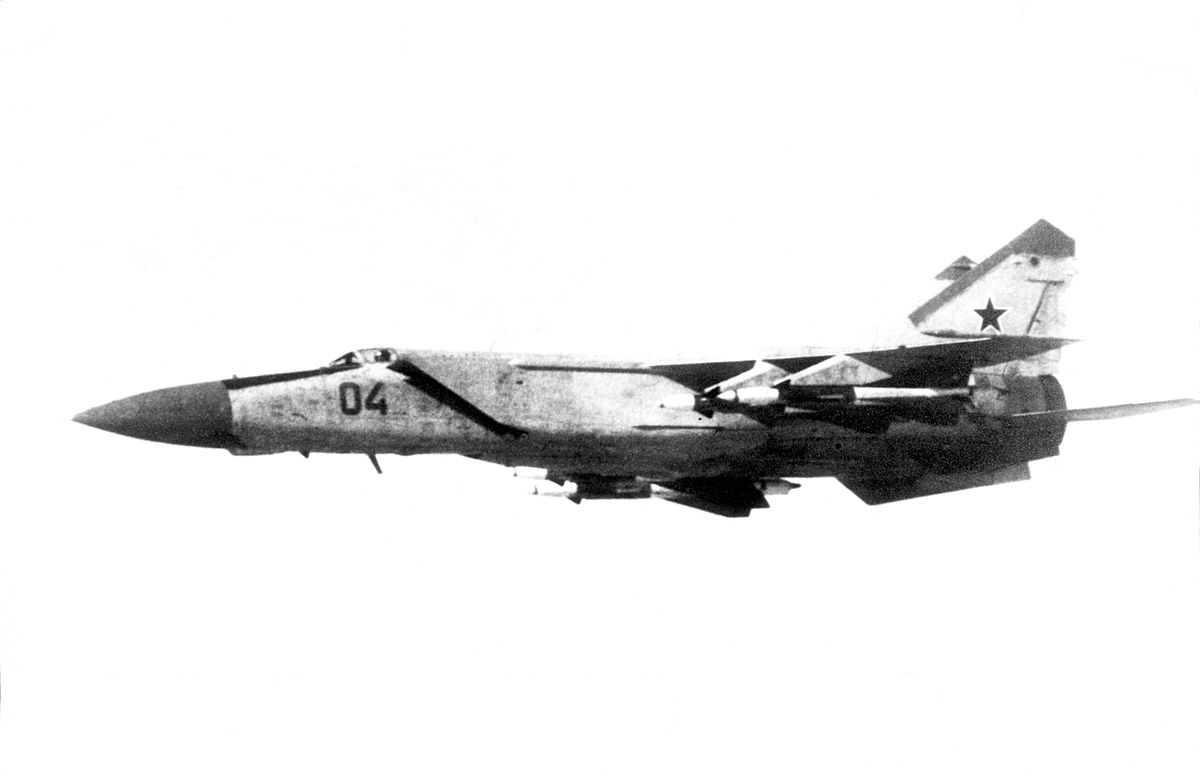Lt Viktor Belenko - The incident ignited the world press with stories about the MiG-25, and US Defense Secretary Schlesinger declared that the new Soviet interceptor is a powerful enough weapon to make drastic changes in Western weapon systems and strategies.
On September 6, 1976, Lt. Victor Belenko, a pilot of a WHO MiG-25 Foxbot unit, based at Chuguyevka Air Base north of Vladivostok (some sources say Sakharovka Air Base) did not return from a sortie. His superiors would hardly have been too upset if he had crashed in the Sea of Japan; As if the news that Belenko had landed at Hakadate International Airport was a complete shock.
Lt Viktor Belenko

The MiG-25 was of particular importance in the Soviet air defense, because (until the introduction of the MiG-31 Foxhound) it was the only aircraft capable of intercepting the Lockheed SR-71A strategic reconnaissance aircraft.
Mig Pilot The Final Escape Of Lt. Belenko John Barron Isbn 10
The Soviet government put pressure on Japan, and demanded the immediate delivery of the stolen Foxbot. As there was no legal reason not to, the MiG-25 was returned in a dismantled and boxed state. The Japanese did this on purpose to cover up the 'operation' that they and the US were carrying out.
However, the Soviet experts quickly discovered how much the West really knew. When the MiG-25 returned to the USSR, it was found that the Americans ran the engines and measured the infrared signal of the aircraft, and also carried out a detailed analysis of the systems and avionics, including the radar, and structural materials. Not knowing how to operate the equipment, the Americans damaged part of it and had to make urgent repairs (foreign fuses and resistors were discovered in the radar set).
Belenko's movement is also mentioned in the Craig Thomas novel Firefox, on which the Clint Eastwood film is based. According to an interesting post that appeared on Quora, the book contains a mail conversation (it is a kind of soldier's page since it appeared in 1977 and takes place shortly after) in which they discuss Belenko's steps. Someone argues that the new MiG-31 Firefox is not a big deal because they already have the Belenko MiG-25, while someone else claims that the MiG-31 is a completely different beast.
Then when the MiG-31 flies for the first time, NATO has everything in the air to spy on it, and no one can see anything on the radar. They conclude that not only is the MiG-31 faster than anything else and equipped with a revolutionary thought-controlled fire control system, but it is also invisible to radar and they must steal it.
The Daring Defection Of The Secret Soviet Super Fighter
As Viktor Belenko's move was widely publicized at the time, the publisher had an unusually large first print run, playing on the publicity of Belenko's breakout to boost sales.
In fact, Craig Thomas was inspired by the great performance of the MiG-25, and then Belenko broke up when he finished the book and was included in the letters.
Fun fact: The cover artwork featured a MiG-25 and the aircraft was described similar to the MiG-25 in the book. In the sequel, Firefox Down, the description was more reminiscent of the MiG-31 in the 1982 film.

Fun fact #2: The Swedish paperback version of Firefox features an airplane channel and a twin delta plane that looks quite similar to the Swedish JA-37 Viggen. When the Soviet pilot Viktor Belenko crossed to Japan with his MiG-25, he stretched out. Secrets of the plane to the West, but the breakthrough also led to the plane's success in international markets. Today, 45 years after its first flight, the Foxbot is still the world's fastest fighter - capable of outrunning all Western fighters ever in service.
How A Soviet Pilot's Defection To Japan Benefitted Mig
Forty years ago this month, Soviet pilot Viktor Belenko stole a secret MiG-25 and defected to Japan, allowing the West to test its country's most advanced jet fighter.
On September 6, 1976, several MiG-25s belonging to the 11th Air Force, based in Primary, took part in routine exercises. Lieutenant Belenko was one of the pilots of this formation. As the plane approached the coast of Japan, Belenko separated from his group and lowered his MiG-25 low to avoid Soviet radar. When he entered Japanese airspace, he was chased by two American-made F-4 Phantoms, but they could not keep up with the world's fastest fighter. Belenko landed his plane in Hakodate in northern Japan and was taken away by Japanese authorities.
For the West, the breach came as a surprise, as the Soviet Union's obsession with secrecy made the MiG-25 the most stealthy fighter ever. Western experts have attributed almost mythical aeronautical capabilities to the aircraft, dubbed the Foxbat by NATO. The name Foxbat was enough to make some Western pilots abort their mission.
Work on the MiG-25 began in the early 1960s at the Soviet Union's Mikoyan-Gurevich Design Bureau, after news emerged that America was working on a Mach 3 bomber. Faced with the prospect of American B-70 Valkyrie bombers launching nuclear weapons over Soviet territory, Moscow decided to develop an equally fast interceptor.
Hobby Master Ha5601 Mig 25p Foxbat Fighter Red 13 Viktor Belenko, Soviet Af 1/72
Even when the troubled Valkyrie project was shot down, the Soviets continued with the Foxbat, resulting in the world's fastest jet fighter and interceptor. But Western pilots could never see the new MiG, because the Soviet Union took extraordinary measures to keep it secret. The veil of secrecy was lifted by Belenko's breakthrough.
The Japanese were initially at a complete loss, what to do with Belenko and the beast of a plane in which he arrived. While the Soviets wanted their pilot back, the Americans wanted a look at the unknown Foxbat. It was the first time that Western experts were able to take a closer look at the plane, and it revealed many secrets and surprises.
When the US Laughter broke out in the Pentagon when they learned that the Russians were using outdated technology in their most advanced planes.
But the Americans continued to wonder why the Russians were using vacuum tubes. It took many years to learn that the man who designed the Foxbat was as smart as a fox. Using vacuum tubes, the MiG-25 radar had a huge power to burn, that is, it was invulnerable to any electronic jamming.
This Mig Super Fighter Terrified Nato. Then A Soviet Pilot Stole One
In addition, the vacuum tube made the aircraft's systems resistant to electromagnetic pulse (EMP), which the Russians knew about long before the West did, meaning that in the event of a nuclear war, the Foxbat would be the only - yes, the Only – aircraft. Flying on the planet.
Among the many secrets Belenko divulged was that Soviet aircraft experts faced a serious problem: despite the use of grain alcohol, an old but effective de-icer, the MIG-25 Foxbat interceptor windshield was icing up . What was wrong? The answer, according to Belenko: Soviet crew chiefs on the ground drank grain alcohol to ease the boredom of Siberia and secretly replaced the liquid with water.
Belenko told his American interrogators that at 80,000 feet his plane could only fly safely at Mach 2.8 (3,500 km-ph), not the MIG-25 prototype's Mach 3.2. Even at Mach 2.8 he complained, his engines overheated and the four air-to-air missiles that dropped under the wings vibrated dangerously.
American technicians discovered that Soviet technology was surprisingly old-fashioned in many ways: the wings of the MIG-25 were welded by hand, not machine, and the rivets were not ground flush to reduce drag.
Til Of Viktor Belenko, The Soviet Pilot Who Defected With The Mig 25 (most Advanced Soviet Interceptor Of Its Time), Who Initially Assumed That His Cia Handlers Were Keeping Him In An Elaborate
Viktor Belenko, a Soviet pilot who defected while landing his top secret fighter jet in Japan, leaves a commercial airline in Los Angeles with security agents on September 9, 1976. Source: AP
Despite the shortcomings, one expert told TIME correspondent Joseph Kane that the MIG-25 is a "fantastic" aircraft. Its engines burn less soot than the American planes and produce 27,000 pounds of thrust instead of the 24,500 pounds estimated by American experts.
Of course, the biggest loss for the Soviet Union was that Belenko took the aircraft's operating manual with him. The Soviet Air Force also had to develop a brand new radar for the MiG-25 because the capabilities of its existing radar were compromised. With American pilots unaware of what countermeasures to take against the old radar, the Foxbat would be at a huge disadvantage in any future dogfight. The Soviets almost reinvented the airplane and paved the way for the MiG-31, which has the Foxbat's speed minus its temperamental nature.

One of the PR and military disasters in favor of Russia was that the MiG-25 was no longer a state secret and became available for export. Several countries in the Middle East asked Russia to supply MiG-25s, but Moscow prevented the export of its flagship aircraft. In fact, Russia's policy was to supply all its allies, and the satellites only removed the export versions.
But All It Did Was Just Go Really Fast??
It blows with Belenko
Ruger 556 review, vg6 epsilon 556 review, msar stg 556 review, sinn 556 review, sinn 556 i review, meridian 556 review, eotech 556 review, precor efx 556 elliptical review, benchmade 556 review, surefire sfmb 556 review, precor efx 556 review, sinn 556 anniversary review
0 Comments